Review for House
Did I just dream this film or was it ‘real’? The wildest mash-up of old-school horror, the zany garishness of ‘The Banana Splits’ meets ‘The Partridge Family’, a healthy dose of ‘Monkey’ (that mad 70’s Kung-Fu series), all mixed up with some sleazy Japanese school-girl voyeurism and a level of surrealism that makes Salvador Dali look like a Bank Manager.
A short film, running at just under 90 minutes, ‘Haus’ was made in 1977, a time when, (pop) culturally, so much was happening, at least here in the UK with the advent and influence of punk and the New York art aesthetic. It seems things were getting crazy in Japan too, particularly for director Ôbayashi Nobuhiko, who, when challenged to create something with the box-office impact of ‘Jaws’ came up with this instead.
You might be forgiven, early on, for supposing that this film might actually intend to follow a clear narrative, albeit highly stylised. It starts out with the portrayal of a near perfect life for a group of school girls who seem blissfully happy with each other and their lives. That is until one of them, Angel, meets her father’s new girlfriend (Ryoko) who he intends to marry. It transpires that her mother died some time ago and since that time, her father has always taken her on a yearly beach holiday which, with school about to break up, she is looking forward to. But with a new lady in their lives that’s never going to happen. In a sulk, she elects to stay with her friends at a wheelchair-bound Aunt’s house in the coastal countryside.
Each of her friends has a nick-name which clearly reflects their key character trait (pre-dating The Spice Girls by more than a decade). So Melody is a brilliant pianist, extremely bright ‘Prof’, loveable Sweetie, and Kung-Fu expert and dreamer, Fantasy – not to mention ‘Mac’ who is always on the look-out for some more food.
So far so good. Despite the whole thing feeling super-real and incredibly stylised (with stop frame animation, pop-art graphic overlays, super-real studio backgrounds and so on), things don’t go truly mad until the girls arrive at Angel’s Aunt’s house.
I should mention that on the way there, whilst riding the train, Denis Gifford’s seminal ‘A Pictorial History of Horror Movies’ book (endlessly thumbed through by those of us of a certain age in the pre-internet, pre-VHS age) is displayed prominently throughout the trip – a direct nod to its influence on so many, packed as it was with monster and horror stills that stuck in the imagination.
Angel has seen her Aunty since she was a child and is surprised to see that she really doesn’t look a day older, despite being in a wheelchair.
All seems OK at first but there is something odd and off-kilter about the Aunt. Why does she lick her lips so much everytime the slightly plumper Mac appears, as if she is keen to eat her? And is that what’s happened when Mac disappears? When her dismembered head appears out the house’s well, and flies through the air, eventually landing to bite Fantasy squarely in the behind, you know things are about to get a bit daft. Of course, when she tells the others what has happened, they refuse to believe her. She is called ‘Fantasy’ after all.
Fantasy then notices that the Aunt seems now a picture of health, but disappears into the fridge only to reappear front of frame to the disco beats of cat meows.
And so it goes as the girls are bumped off one after the other in increasingly surreal ways – from being turned into fire, to being eaten by a piano, or wedged into the inner workings of a clock to being in the mushroom cloud of a nuclear explosion – literally anything goes here. It really is a wild flight of imagination.
All I can say at this point is, steel yourself. Given it’s utter madness, it’s surprisingly watchable and never lags with its relentless and ever-changing creativity.
The image quality here is superb and is the exact same flawless and dust-free transfer released by Janus Films and the Criterion Collection. Unlike a previous DVD release, it’s presented in its original aspect ratio which is close to 1.33:1. The audio track, PCM 1.0 mono Japanese , is very adequate too with good, clear optional English subtitles.
There seems to be a generous quantity of special features too, though many have simply been ported over from the Eureka DVD release in SD, comprising interviews which have been blow-up to HD scaling which only serves to show up the drop in quality. There are eight interview based features in total.
The first, entitled ‘Beginnings’ is a 17-minute interview with director Ôbayashi Nobuhiko who talks about his early years producing experimental films and TV adverts as well as his experience working with some of the Hollywood greats like Catherine Deneuve, Kirk Douglas, and Sophia Loren.
‘Pitch’ (7:30), carries on the tale with Ôbayashi discussing how the film originated and how he opted to direct it for Toho, even though it had already been turned down by most the other Toho directors.
‘Script’ (15:30), features both Ôbayashi and his daughter Chigumi, who was just 15 at the time of filming and who was constantly consulted by her Dad during the making of the film to help write the script from the perspective of a highly imaginative school girl.
‘Pre-Release’ (15:30), Ôbayashi discusses the highly creative promotional he led which also covers ‘that’ poster with its now iconic pool of red blood below the house. Comic books, an LP and newspaper articles all preceded the film, building the hype to fever pitch before release.
‘Publicity’ (3:30), Tomiyama Shogo, the film’s publicist, adds his recollections about hype surrounding the film; pretty clever stuff in the days before the internet or social media.
‘Casting & Production’ (20:00), Ôbayashi clearly loved casting and working with a young and unknown cast and he talks about the atmosphere on set with great affection. It sounds like he had a blast.
‘Fantasy’ (2:15) features actress Oba Kumiko (Fantasy) talks about her experiences of the fim, not least being drenched and bombarded by furniture during some of her more harrowing scenes.
‘Release & Legacy’ (7:30), Ôbayashi reflects on the film’s lasting impact and legacy – as well as its influence on contemporary filmmakers like Kurosawa Kiyoshi (Cure, Creepy)
BRAND NEW Video Essay by David Cairns (27:00) I’m now officially David Cairns biggest fan. No one does these ‘video essays’ quite like he does. In the shortest space of time, he manages to condense Ôbayashi’s career in film as well as a brilliant analyses of ‘House’ itself. No film student should be allowed to leave the building without maximum exposure to Cairn’s video essays.
Original Trailer (1:30) Reflects the madness of the film perfectly without giving anything away.
The set also comes with a really good booklet with an excellent essay by Paul Roquet on Ôbayashi, along with lots of stills and credits.
‘House’ may be as mad as a jar of frogs but it’s a film that anyone with an interest in the broader reach of cinema will want to check out. This may well prove to be the definitive edition with the self-same (excellent) transfer as the Criterion release but with the added exclusivity of a superb video essay from David Cairns and an excellent booklet to boot.
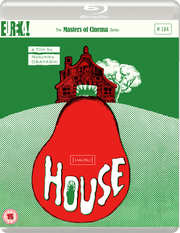
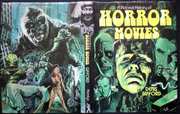
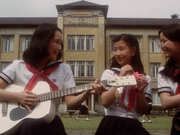

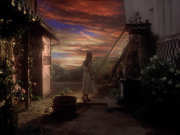
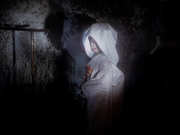

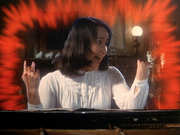
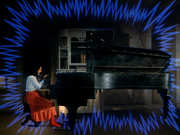
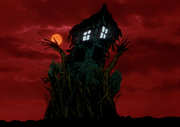
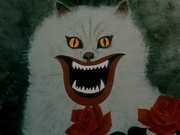
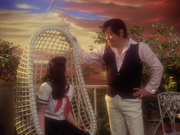
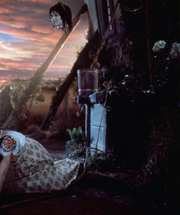
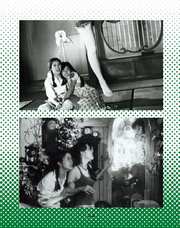
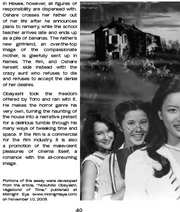


































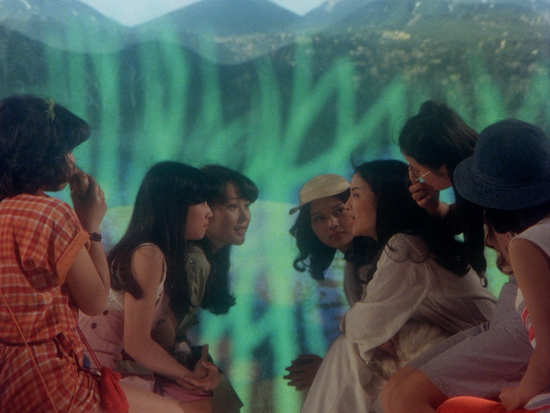



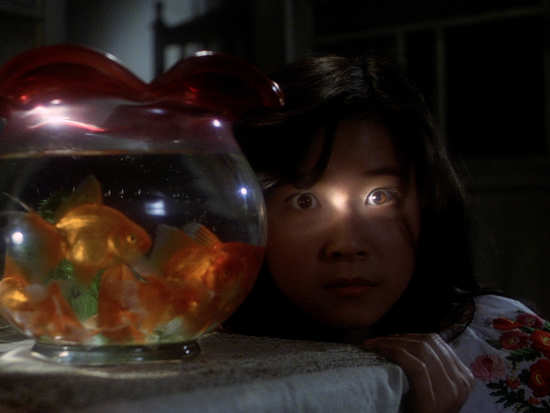






Your Opinions and Comments
Be the first to post a comment!